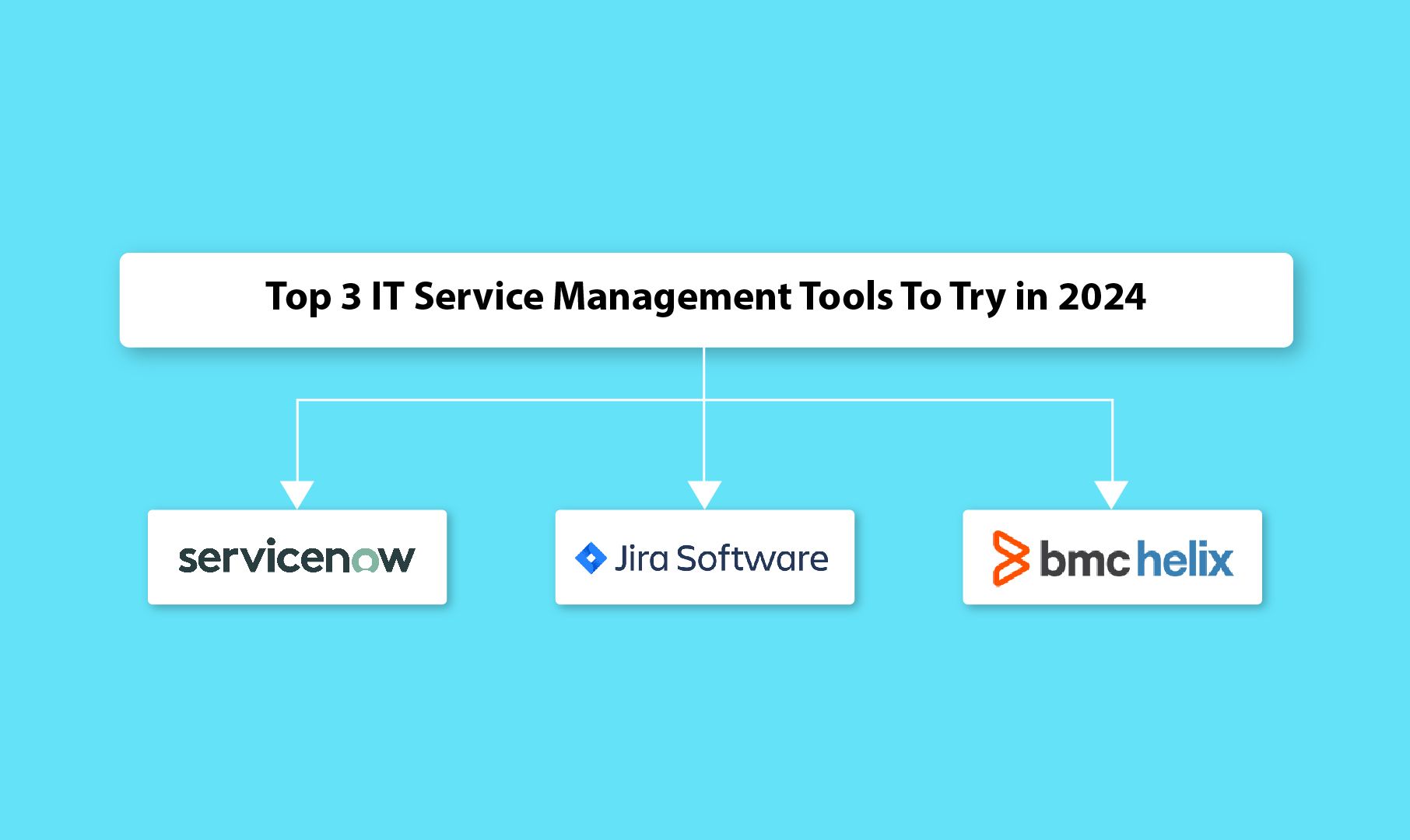In the era of digitization, what is always in the mind of every business is how to optimize business operations and create efficiency. IT service management is one such framework that helps the IT teams to realize this goal. It makes use of a number of plans and measures to get rid of the constraints.
Such teams can process and fulfill incidents, problems, and requests through the set channels. This blog will shed light on the different aspects of change management, configuration management, etc. Moreover, we will look at some of how AI can transform ITSM as well as some of the most effective ITSM tools used in the world. If you are a business leader looking for strategies for operational efficiency, then this post will please you very much.
Breaking Down IT Service Management (ITSM)
IT service management is an all-encompassing term that indicates the operational management of the IT departments and the delivery of various services to the end users. It comprises all the methods used to plan, implement, or manage services to the end users, be they technical or not. ITSM is usually regarded as a constant practice where one collects information, prepares a design, builds the system, and extends it into production.
The IT structure of an organization includes the processes that fall into these main groups.
Change Management
In IT service management, customers might raise a change request at any time. This is disruptive, and IT teams want to document these changes for future reference. Change management is the process by which teams can perform these modifications in a controlled m manner. It begins with raising a change request (which can be as simple as changing a computer) and ends with a post-implementation review.
Configuration Management
Configuration management establishes a strong relationship between hardware, software, and people. This process aligns these processes and offers better control, thus ensuring better performance.
Request Management
As the name suggests, this involves handling requests related to IT services to ensure seamless and smooth service delivery. This can range from requesting a new password to updating personal information.
Incidence Management (IM)
Incidence management is an ITSM process that happens when a disruptive incident arises (power outage, system issues, etc) in IT. These events deter the IT teams from delivering value/services. IM processes are applied to solve those issues, restore services, and take steps to prevent reoccurrence.
Problem Management
While incidence management deals with sudden incidents, problem management is for long-term structural problems. However, the goal is to remove issues from the IT infrastructure and improve IT service management and reliability.
Knowledge Management
Knowledge management is part of enterprise service management, which involves processes from data documentation to dissemination. It ensures that available information is shared across departments to ensure interoperability and risk reduction.
Continuous Management
Continuous management is an ongoing IT service management process that analyzes performance metrics and implements strategies to improve overall performance.
Service Level Management
In IT service, an agent’s performance is measured by the time required to complete SLAs (Service Level Agreements). These SLAs are created when a customer raises a request or a complaint. SLM focuses on improving service quality and rectifying weaknesses, thus ensuring customer satisfaction.
IT Service Management Framework

Although there are many ITSM frameworks, we will discuss the three most prominent options:
ISO 20000
ISO/IEC 20000 is an international standard for ITSM derived from ITIL. It focuses on establishing a baseline for managing IT services and ensuring consistency and quality. Organizations can achieve ISO/IEC 20000 certification, demonstrating their commitment to high-quality IT service delivery.
ITIL (Information Technology Infrastructure Library)
ITIL provides a comprehensive set of best practices for managing IT services, focusing on aligning IT services with business needs. ITIL covers the entire service lifecycle, including service strategy, design, transition, operation, and continual service improvement.
COBIT (Control Objectives for Information and Related Technologies)
COBIT is a governance framework that helps organizations ensure that IT is aligned with business goals. It provides a set of controls and metrics for IT processes, emphasizing regulatory compliance, risk management, and value delivery.
How Does AI Behave As A Differentiator in ITSM?
AI in IT service management can help teams go through past interactions and engage with customers on a personal level. AI-automated virtual assistants can deal with Level 0 assistance, i.e., handle simple inquiries. AI’s predictions can improve an organization’s problem-management skills by studying performance.
However, AI may help companies automatically categorize incidents and assign those cases to a specific team. In some cases, it might provide resolutions for the problem without involving a human. Machine learning algorithms can also help predict incidents, thus preventing disruptions even before they occur.
IT teams receive service requests through communication channels like Slack or Microsoft Teams. If any organization decides to automate these channels, it might choose AI. AI bots may resolve the issue themselves or work together with a human agent. Suppose a user requests a password change. AI can respond to this and act accordingly.
Are you troubled by recurring problems disrupting IT services? You need to analyze the root cause by looking at past data and discrepancies. These algorithms can help you see trends and detect issues not observable to the human eye.
AI can drive change management processes and document the results of post-implementation strategies. This provides a safe environment for the team to run its operations smoothly without distractions.
IT service teams must have access to updated knowledge articles on recent events or incidents, as per standard protocols. These articles help new team members be prepared when similar events occur in the future. People might overlook or skip these knowledge gaps, but AI will not. It can match existing content with inbound questions and answers using the articles. The best part is that it can also personalize the replies, giving them a human touch.
Do you want to automate the IT asset configuration process and manage databases? Or do you want to detect anomalies before operational disruptions occur? AI can enhance the overall experience by automating these processes.
AI can forecast the future requirements that may arise within an organization. When equipped with this data, departments can work on subjects like resource allocation or asset utilization. This lifts organizational efficiency and helps teams to expand into cross-departmental functionalities.
AI can detect potential threats in the network or IT infrastructure even before they become one. Also, it identifies these issues and suggests potential remedies, allowing teams to proactively monitor issues and resolve them.
Also Read: Unlocking Business with Chirpn's Advanced Enterprise Integration Solutions
How AI Automates ITSM Across Different Industries?

In the last couple of years, AI has made enormous strides in transforming IT service management across different industries. We have listed some case studies below to provide an overview of this subject matter:
Healthcare
ITSM in healthcare mainly deals with processes like booking and scheduling appointments and generating bills. Along with automating these areas, healthcare units can amp up revenue cycle management and claims management using AI. The immediate benefit is it reduces errors and frees up time, but in the long term, it helps with resource and incidence management.
Chirpn collaborated with Parentis Health to facilitate personalized senior care services and improve operational efficiency. We have utilized AI and AR to transform medical staff training and patient interactions.
Consumer Goods
In the consumer goods industry, AI in ITSM plays a vital role in augmenting product development cycles. Companies can use these data-driven insights to develop and launch products that match market standards and meet customer expectations.
Retail
The retail industry relies heavily on personalizing customer journeys and experiences for revenue generation. AI plays a huge role in it, as it helps IT service management teams to quickly respond to inquiries and issues. The technology works in favor of driving the point home, which ultimately makes the shopping experience seamless.
Top 3 IT Service Management Tools To Try in 2024

ServiceNow
ServiceNow is hailed as a leading ITSM tool with features for incidence, change, problem, and service management. It comes with a user-friendly interface and automation tools to efficiently respond to queries in a short time.
Jira
Jira by Atlassian allows IT teams to automate service request management and service level management. It can be integrated with other Atlassian service management tools and ensure better communication and collaboration between teams.
BMC Helix
BMC Helix is an AI-driven ITSM solution that emphasizes automation and intelligent service management. It offers features such as incident and problem management, change management, and service request management, all powered by AI and machine learning.
It is clear in this blog that ITSM aids companies in delivering value to their customers and users. But AI in ITSM takes it a step further by automating mundane tasks, boosting operational efficiency, and matching customer expectations. Tools like Jira and ServiceNow are some of the best ITSM solutions we can use to handle these requests. Adopting these technologies will help companies be well-positioned and become business-first in the market. Chirpn IT, being an AI-first company, helps companies leverage AI to boost operational efficiency. We specialize in delivering cutting-edge solutions tailored to meet the industry’s standards.

